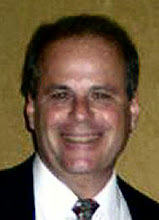Any good museum will make educational material available for both children and young adults. With that idea in mind, the Museum of Family History has now made available a second way for adults to interact with their children or grandchildren in an educative way.
Part of the process of increasing a young person's awareness of the importance of both family and history (and family history in general) is raising their consciousness, teaching them how to listen to stories told to them by their elders, and creating opportunities for them to think about history outside of their own classroom at school, especially as it relates to their own family's history.
In this vain, the Museum has made available a number of "thinking exercises" based on some of its current online exhibitions. Meant for kids, young adults and their families, this educational resource gives families opportunities to learn and share ideas with each other as they look together at one or more photographs presented to them. Some exercises are more simplistic and may good to use with children; others may require more critical thinking and might be better suited to young adults (some may say even older ones).
These "thinking exercises" may be used on their own, or they may be used in conjunction with other materials or exhibitions on the same or similar topic found elsewhere within the Museum. They may also be used as a basis for further discussions or study; how it's implemented will be up to you if you choose to use them.
These exercises allow children to employ their imagination, to empathize, and to place themselves in various situations in which their ancestors may have found themselves many decades ago. They may get to play the role of one or more people in a particular photograph and both ask and answer the questions that are posed to them by the Museum.
One example of an exercise has to do with immigration at Ellis Island where the young person must imagine that they just arrived at Ellis Island with their family after a long trans-Atlantic voyage, and they are waiting on line to be "inspected." What do they see around them? What languages do they hear? What are they thinking? What might their parents be saying to them? Who in their family now would they like to be waiting for them if and when the pass through the inspection process? These are just some of the questions posed in this particular exercise.
Of course, you and/or your children may wish to make up your own questions based on your own family history, as each family's history is unique. There are no answers supplied to the questions posed, as there are no right or wrong answers.
In these thinking exercises, one has the opportunity to do some creative thinking. Hopefully, the participant(s) in this exercise will find some relevance to their own life as they do these exercises. They may be important in understanding more about the history of their own family and of history in general.
In a similar vein as the Museum's newly featured book and PowerPoint presentation "Kiddish Yiddish" (see previous posting), the "Thinking Exercises" will give adults and opportunity to work closely with their children or grandchildren and it will enable the adult to talk about their life experiences too (or the life experiences of a parent, grandparent or ancestor) as it relates to the specific exercise. Anything to promote intergenerational communication, right?
More such exercises will be added to the Museum's "Look, Listen and Learn" classroom in the future, including audio and video components which will become an integral part of the exercise. This should be very interesting and hopefully give joy to those who participate in these exercises.
The main page for this can be found at www.museumoffamilyhistory.com/erc-tex-main.htm.
The Museum welcomes anyone to create appropriate "thinking exercises," though they should contact the Museum first at erc@museumoffamilyhistory.com .
Subscribe to:
Post Comments (Atom)




A great post, Steve. We need to "catch" our future genealogists as early as possible!
ReplyDeleteSchelly Talalay Dardashti